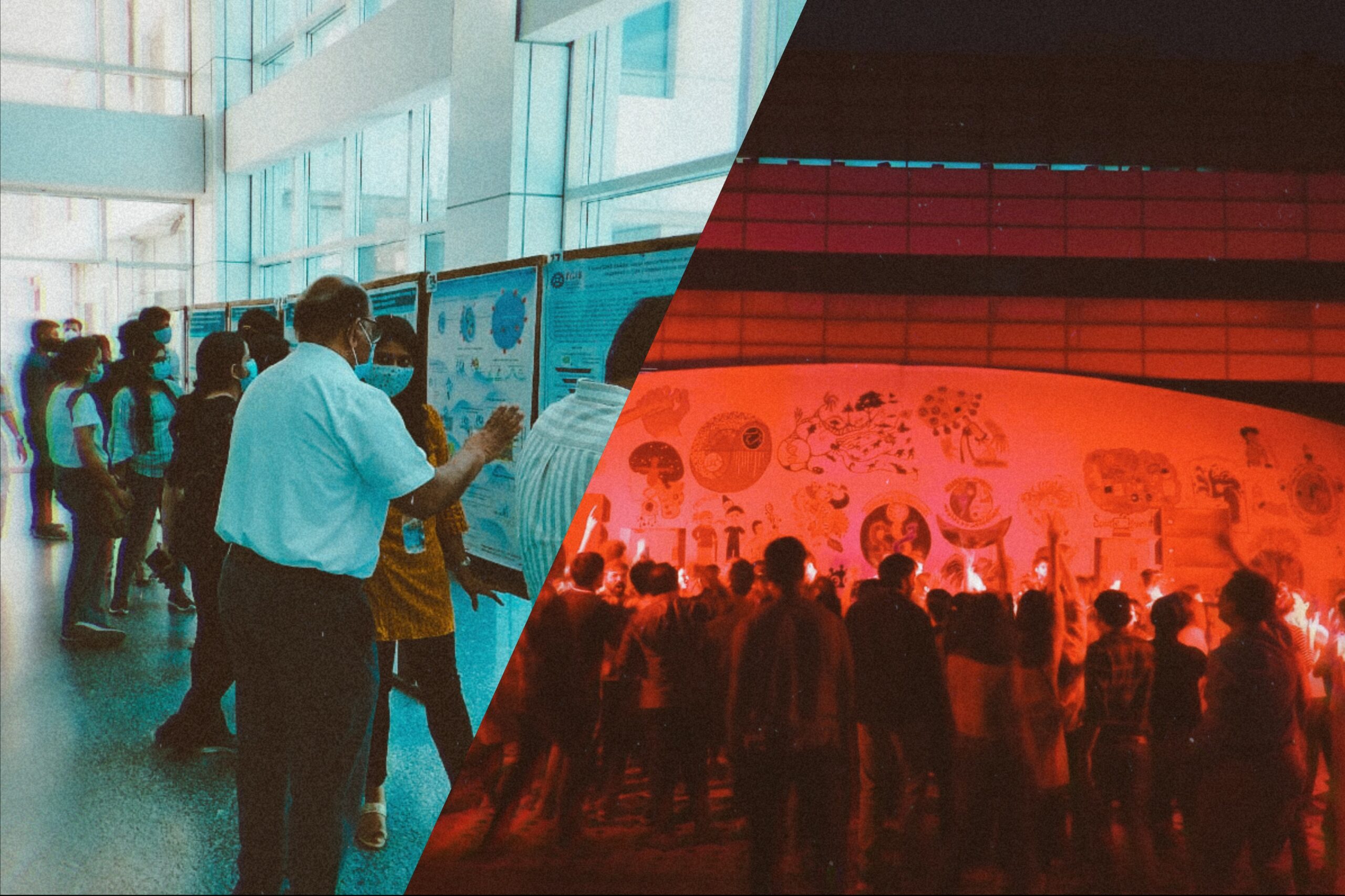Cover picture credit: Kannan B N, Chetana Sachidanandan
On a calm breezy night, whilst taking a stroll in the garden, looking at the wet sky and drenched trees, something catches your attention. You observe tiny flickers of light, in a bunch, pulsating with a steady rhythm. These little twinkles are fireflies, insects from the Lampyridae family which have a distinctive ability to luminesce at night. This chemiluminescence in fireflies is an evolutionary mechanism which wades the predators away as well as allow these beetles to communicate within their species or community. Nature exhibits numerous enlightening showcases like the fireflies demonstrating the importance of “science” communication inter-community as well as intra-community.
A recent shared experience from within the campus was during the poster presentation session and the Science Fest of IGIB. Our joy and enthusiasm, collectively as a community, discussing and celebrating our science was absolutely exceptional. Numerous researchers participated in the event and many had positive points to share. “Describing my work to external scientists paved the way to fill some lacunae in my work and helped me find new opportunities where I was offered to collaborate closely” – says Kriti Biligiri, a 2nd year PhD student in CSIR-IGIB working with Dr. Shravanti Rampalli.
Such experiences enrich the course of these unending 5 years of PhD, it is easy to forget the motivation that drove us here. We become unhinged from our inspiration and tend to forget where we came from. This is also true for the post PhD researchers whose life can at times feel like an unrelenting hustle for grants and projects. The comfort that we get comes with the knowledge that there are thousands of our colleagues who are in the same boat as us and as a community, we have taken the responsibility of unfurling the layers of nature and creating new technology.
We think it’s not just a matter of comfort but also of responsibility to be transparent about our work through vocal or written communication like preprints. These steps will strengthen the web among the researchers and the people. Fortunately, we do have some examples to look up to like the late physicist Richard Feynman.
“Science is the belief in the ignorance of experts”
Richard Feynman
He believed in reaching the public through his science. Researchers who endeavor to share their science with the public, believe in relaying the faith of science to the non-scientific community. These science communicators are pollinators of science, spreading and disbursing the buds far and beyond. Although there are gaps in general scientific knowledge within our society, the best part about bringing science to the people is their receptiveness and willingness in understanding the workings of nature, if communicated effectively and simply. For instance, the scientific awareness about COVID19 is far greater in people compared to decade-old diseases such as Tuberculosis and Typhoid. This awareness is attributed to active efforts in the COVID19 science communication using a variety of multimedia platforms to target different public demographics.
Essentially, science communication should not be limited to a specific language or any mode of communication. We should be using our most influential platforms to communicate science in a manner that most people can be exposed to the basics with minimal interest. Science can also be dubbed like movies; can be hyped through its implications; can be made to linger in one’s mind through colored canvases, melodies and rhythms.
Seeds sown through efforts in this direction can and have led to community driven outputs like citizen science projects worldwide. Many projects are currently open for all types of science enthusiasts to get engaged in the scientific process through their contributions. Stories that emerge through such methods are more celebratory. CitSci India – Citizen Science for Biodiversity is one such initiative aiming towards imploring the public to engage in building a successful biodiversity network in India.
To put it succinctly, Science is not a mirror made just for researchers to reflect upon themselves and their own science; it is a glass window – to reflect as well as to communicate our science with the people.



